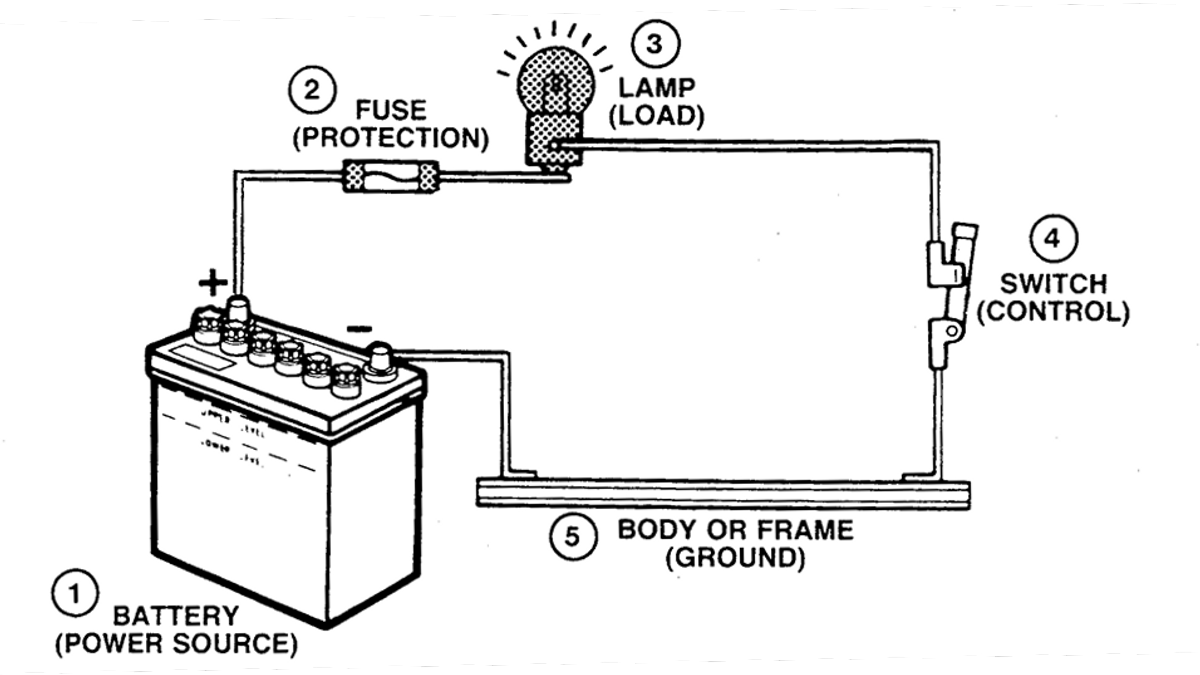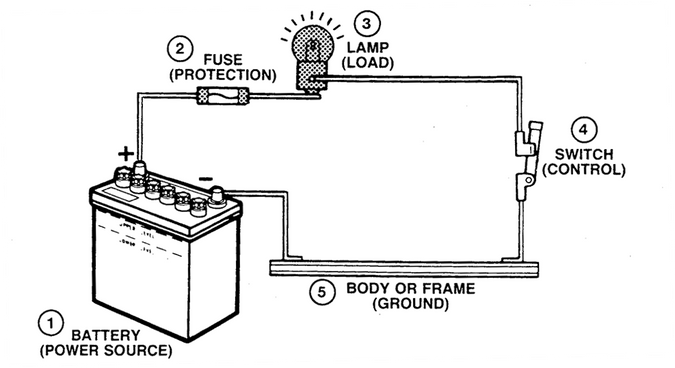
Basic Electrical Theory
September 2nd, 2010
Categories
By Paul Bindon & Matt Stroud
Electronic devices are run by smoke. When they become damaged or fail, the smoke escapes and they no longer work.
This explanation of how electricity works may seem comical, but it highlights the mystery surrounding electricity as something we cannot see. The results of electricity at work are obvious to us; the lights turn on, the motor turns and the stereo plays music. In contrast, the flow of electricity through wiring becomes somehow mysterious or even frightening when high voltages are considered.
The use of high voltage in transportation has caused some uneasy or wary approaches to vehicles involved in collisions. When considering hybrid vehicles, high voltage orange wires come to mind. “Don’t touch the orange wires” has been the most common message that has been relayed to first responders during hybrid training. Why should you not touch the orange wires? When asked this question, most first responders I have talked to reply with either “because they are high voltage”, or “because they will shock or kill you”. This basic message of caution is the reason many responders may hesitate or delay the approach to patients when hybrid vehicles are involved in an MVA. In this article we will cover a basic understanding of electrical theory as it applies to transportation use, with the goal of dispelling some of the mystery of electricity.
DC circuits
All batteries operate DC or direct current circuits. This is true of small watch batteries all the way up to 800V hybrid bus batteries. Current in a 12 Volt DC circuit flows from the positive (+) terminal of the battery through the weakest link (fuse), through a load device (bulb), a control circuit (switch) to the chassis or frame then finally the negative (-) terminal of the battery. This is considered conventional electrical theory. It is important to note that the vehicles body or frame is used as part of the circuit. For low voltage applications this is perfectly safe, and simplifies the wiring.
- The power source in this case is the conventional lead/acid 12 volt battery.
- The circuit has a weak link (fuse) that protects the rest of the circuit in the event of an overload.
- The load device (bulb, radio etc.) This actually puts the power to work, and is the visible indication of what the electricity actually does.
- On/off switch or some type of circuit control.
- Body or frame of the vehicle (ground). This is the return path for the electricity back to the power source.
AC circuits
Wires in an AC or alternating current circuit contain positive and negative voltage on the same wire. There are typically 3 wires associated in a household 110V circuit. They are black (hot), white (common) and bare (ground). AC circuits use terra firma or ground as part of the circuit. Anyone who has become part of an 110V household circuit can tell you this is true.
Hybrid vehicles do not use terra firma “ground” for their AC circuits like household electrical circuits. Since the tires insulate the vehicle from the ground, they would require some type of connection to the “ground” in order to operate the same way. There obviously is no wire running behind the vehicle or hanging down touching the ground as it is being driven along. The vehicle AC circuit is therefore self-contained and does not use the chassis or frame of the vehicle as part of the circuit.
Voltage vs. Amperage
PSI vs. GPM
A stun gun is an example of a “high voltage” device. They operate with between 100,000 to 1.5 million volts. The reason they are not lethal is that they do not provide enough amperage. High voltage certainly, but low amperage output (1 to 5milliamps). Compare this example to a fire apparatus pushing water through a garden hose. High pressure (600psi) running low GPM because of the restriction of the small hose.
A 12V car battery can produce 500 to 1000 amps. This example is not lethal because the voltage is too low to overcome the naturally high resistance of our bodies. If you connect the terminals of a car battery with a piece of steel however, the low resistance across the terminals will result in maximum current flow (lots of sparks). Compare this to a hydrant feeding a 5 inch line; low pressure providing very high GPM.
Have you ever heard the expression “It’s the amps that kill you”? This statement is an over-simplification of the hazards associated with electricity. There has to be a threshold where the voltage and amperage become hazardous. The SAE industry standard wire color for hazardous voltage is orange. This means that the voltage contained on an orange wire is over 60V and over 1 amp. It could be 60V or 800V, the wire color is the same and should be considered potentially lethal.
High voltage circuits in vehicles do not use the body or frame as part of the circuit. The DC high voltage wiring (orange) include the Positive and Negative cables. This is done to insulate the body of the vehicle from the high voltage circuit.
The AC high voltage wiring includes all 3 parts of the circuit. This is done to insulate the body of the vehicle from the high voltage circuits.
Safety systems are included to prevent the body or frame from becoming part of the circuit in the event of possible damage. Each high voltage wire is wrapped in a layer that is monitored by the vehicles computer. If the wire becomes damaged, the system is designed to cut the connection from the high voltage battery and isolate the high voltage inside the battery. Other systems are designed to do the same thing in the event of SRS or airbag deployment. It is important to know that the high voltage system is controlled by the 12V system in the vehicle.
Understanding the basics of how electricity works can help dispel some of the myths surrounding high voltage in the transportation industry. Knowing that electricity is more than what we can see will help prevent hesitation when dealing with the emerging technologies of today.



